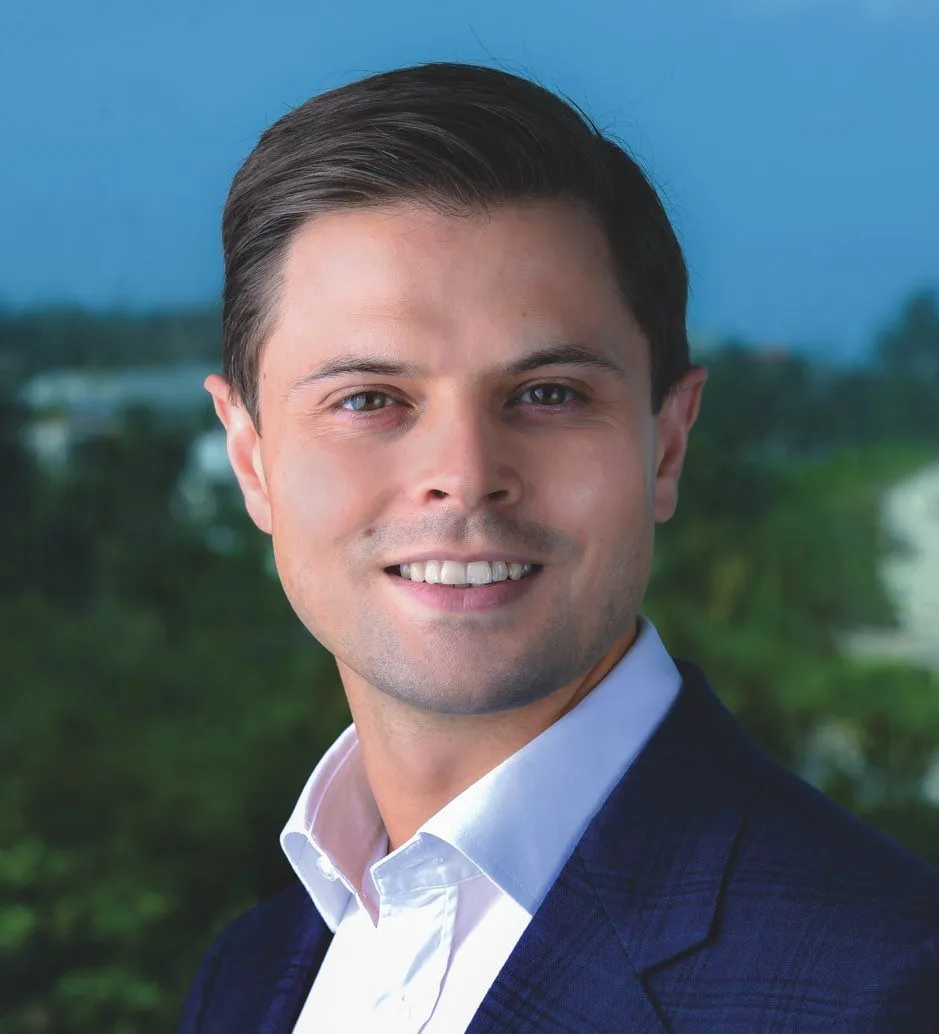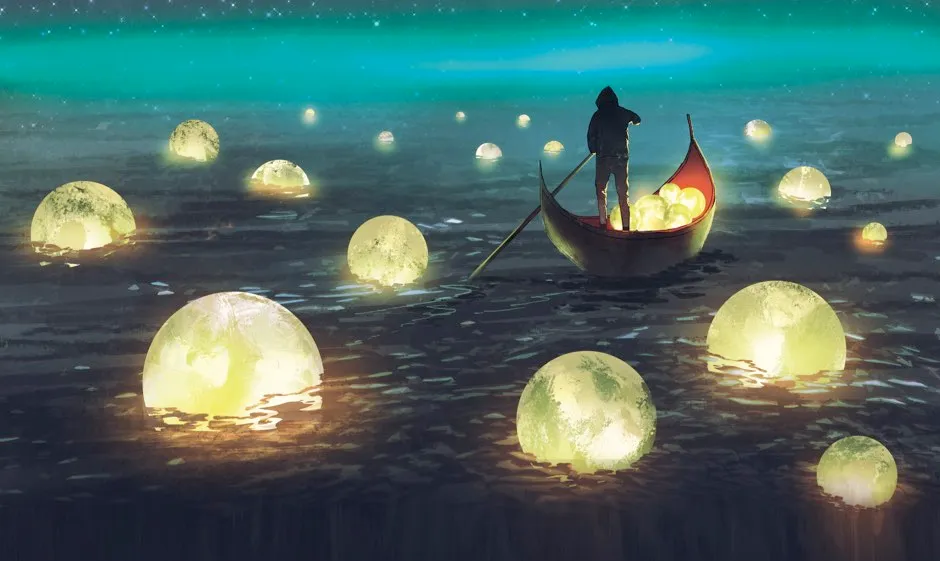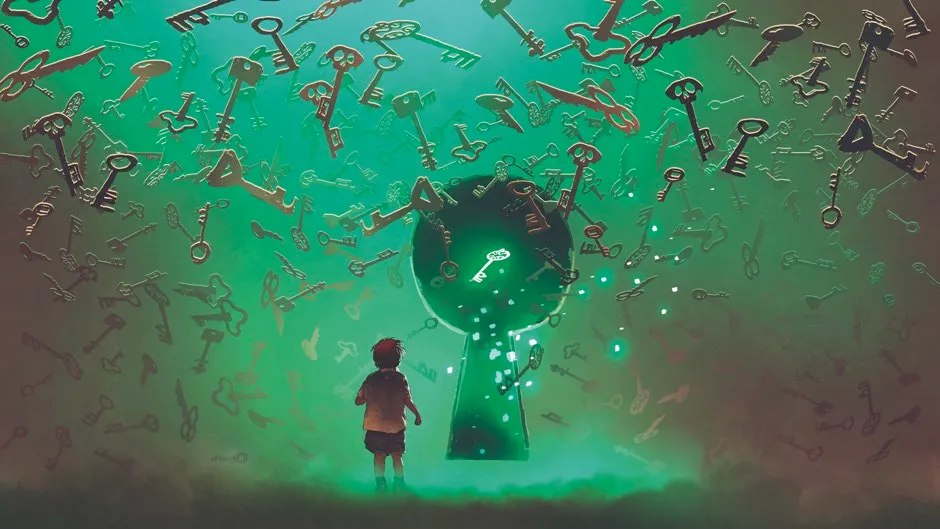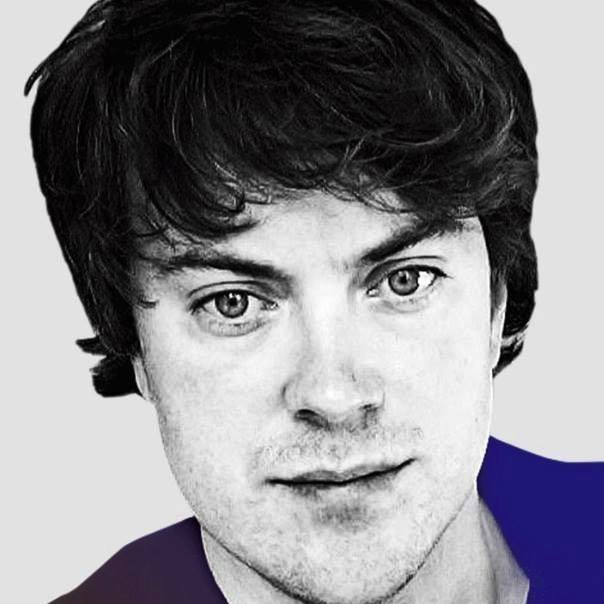Scientific advances have sent people to the Moon and to the greatest depths of the ocean. We’ve split the atom and created computers that can defeat a chess grandmaster. And yet science still can’t explain arguably the most fundamental aspect of existence – our subjective experience of existence. Our consciousness.
That’s not for a lack of trying. There are many consciousness theories, it’s just that none is widely accepted. Part of the reason is the two-tiered nature of the challenge. There’s what the Australian philosopher David Chalmers called the ‘easy problem’ of consciousness, which is explaining the biological processes that underlie mental functions, like perception, memory and attention.
But there’s also the ‘hard problem’, which is explaining how and why there is a subjective, first-person aspect to these mental functions (why, when you stub your toe, you don’t simply register the damaging contact – it actually hurts). Scientific theories of consciousness particularly struggle with the hard problem – in fact, there’s disagreement about whether there really is a hard problem at all.
Why can't we define consciousness?
The Templeton World Charity Foundation (TWCF) – one of a trio of charitable entities established by the US-born British philanthropist John Templeton – believes it can help. The TWCF funds research to ‘enrich individual lives and redefine the frontier of human knowledge and progress’.
At the end of 2019, it launched a new multimillion-dollar funding initiative called Accelerating Research On Consciousness. The aim is to stimulate greater progress in the consciousness field, effectively by reducing the number of competing theories. “I would consider the initiative successful if we kill off one theory,” says Dr Dawid Potgieter at the TWCF, who set up and is overseeing the exercise.
Read more about consciousness in the brain:
The initiative is based on an approach known as ‘adversarial collaboration’, where two or more scientists with opposing views work together to resolve issues in science. It is advocated by the Nobel-winning psychologist Daniel Kahneman, who pioneered our understanding of how people make decisions.
Indeed, the launch of the new consciousness initiative marked the anniversary of another scientific competition that took place 100 years ago. Arthur Eddington used the total solar eclipse of 1919 to compare the predictions of Einstein’s then new General Relativity with Newton’s theories. Einstein won.
But consciousness is trickier to test than gravity, so to take part in TWCF’s competition, the leaders of two rival consciousness theories have to agree to an experiment that will put their ideas to the test. Each side has to agree that if certain results are obtained, their theory will be disproved. Five such experiments are planned in total, with the first having begun in October 2019.
It’s too bad so many researchers are still trying to find the ghost in the machine instead of trying to understand why the machine thinks there’s a ghost in the first place
Dr Michael Graziano
Potgieter was inspired to launch the new initiative after attending an event organised by the Center For Open Science in 2017, after which he got chatting to people in the field of consciousness research.
“Everybody in consciousness said nearly the same thing ‘my theory is really great and underappreciated; it’s testable and I would love the chance to prove my theory is right and the others are wrong’ … a lot of these people didn’t even speak to each other within the neuroscience domain, they’re quite siloed,” he says.
The rules of the competition
The first of the five experiments came out of a two-day meeting organised by Christof Koch, a pioneer in consciousness research, and the president and chief scientist of the Allen Institute for Brain Science in Seattle.
Potgieter had invited him to arrange the meeting and choose the attendees, including the leaders of the consciousness theories of his choice, as well as top experimentalists in relevant methodologies, philosophers (to maintain ‘conceptual hygiene’), and upcoming young researchers with technical skill and energy, who don’t yet have so much stake in the game that they’re likely to be biased.
The rules of the meetings are that each is hosted by someone impartial or at least respected. The host picks the other guests, and there are no generic PowerPoint presentations.

“The meeting has one goal, which is to come up with an experiment that can critically test one or more theories,” says Potgieter. “The mark of success is, at the end, we have an experiment where one or more theorists says, ‘yes, this result from this experiment will kill off my theory’.”
The first meeting led to an agreed experiment that will pitch the Integrated Information Theory of consciousness (IIT) against the Global Neuronal Workspace Theory (GNWT). The former starts by defining what constitutes a conscious experience, and argues for the minimum cognitive machinery necessary to produce it.
Meanwhile, the latter suggests consciousness emerges when information is held at a kind of mental junction before it’s broadcast out to other parts of the brain. “A key difference between the theories is that GNWT defines consciousness as a message, whereas ITT defines it as a special kind of structure,” explains Prof Giulio Tononi, a neuroscientist at the University of Wisconsin and one of the founders of ITT.
The mark of success is, at the end, we have an experiment where one or more theorists says, ‘yes, this result from this experiment will kill off my theory’
Dr Dawid Potgieter
The first experiment is led by Prof Lucia Melloni at the Max Planck Institute for Empirical Aesthetics, and following the principles of open science, is entirely preregistered (this means that all the methods and hypotheses are declared in advance and made public).
Due to run for three or four years, the experiment will involve volunteers looking at various task-relevant and task-irrelevant stimuli and playing video games while their brain activity is recorded by multiple methods, including magneto-electroencephalography, functional magnetic resonance imaging and invasive intracortical recordings.
It’s hoped the patterns of neural activity recorded in different states of conscious awareness will provide decisive evidence in favour of ITT or the GNWT – as agreed by the leaders of those theories.

For instance, GNWT predicts consciousness will be correlated with activity in the frontal and parietal regions of the brain as information is broadcast to specialist modules, whereas ITT predicts the back of the brain will be more relevant to consciousness since it has the necessary structural properties.
“I am optimistic that IIT will not fare too badly,” says Tononi. “But I also hope to learn something none of us expected, which is often a wonderful bonus of science.”
In the further yet-to-be-agreed experiments, other theories to be tested include so-called higher-order theories, predictive coding theories and quantum theories (see below).
Mechanistic versus magicalist theories
Not everyone is completely enthusiastic about the new initiative. Take Dr Keith Frankish, a philosopher at the University of Sheffield, who is sceptical about any theories that claim to explain our subjective or ‘phenomenal’ sense of consciousness (the ‘what it feels like’ aspect) in terms of brain processes.
“The most we can hope to do is to find correlations between brain processes and phenomenal properties,” he says. “And even then there’s a methodological problem. For there can be no objective test for the presence of essentially subjective properties.”

That is, by its very nature, the first-person aspect of consciousness can only be reported and described by the person having the experience (which is why you and I can never know if our first-person experience of, say, the colour red is the same – a dilemma that relates to what Chalmers called the ‘hard problem’).
Frankish believes our phenomenal first-person sense of consciousness is essentially an illusion created by the brain – an approach he calls ‘illusionism’. “The funding for experimental work is welcome and the data gathered will be useful,” he says. “But the project is unlikely to settle anything until we have a better conception of exactly what it is we are trying to explain.”
Read more about consciousness:
- The rise of the conscious machines: how far should we take AI?
- Wild ideas in science: Plants could be conscious
Frankish is a fan of Dr Michael Graziano’s Attention Schema Theory, which sees consciousness as the brain’s modelling of its own attentional processes. Graziano, a neuroscientist at Princeton, is also sceptical of the Templeton initiative, especially its inclusion of ITT.
“Consciousness research does have a big divide at the moment,” he says. “But it isn’t between the two approaches represented in this project. It is between mechanistic theories and magicalist theories.”

Graziano counts his own theory as belonging in the first camp and ITT in the latter. “[Magicalist theories assume that] we have an essentially magic property, a subjective feeling inside of us, that is itself not a physical thing that can be directly measured. We can only feel it and tell each other about feeling it,” he argues.
“This approach resonates with people’s naive assumptions and intuitions, so it is natural and comfortable. But the very first assumption – that a magical thing exists – puts it out of business. There is no chance of scientific success or understanding. It’s like assuming that ghosts exist and then going to search for them ‘scientifically’. It is, in a word, pseudoscience.”
One cannot help but feel optimistic about the possibility for scientific progress, even on a problem as difficult and misunderstood as consciousness
Prof Giulio Tononi
Graziano has more time for the GNWT, but he believes versions of it also flirt with a magicalist approach and, by choosing to pitch this theory against ITT, he sees the Templeton initiative as doomed from the start.
“It’s too bad so many researchers are still trying to find the ghost in the machine instead of trying to understand why the machine thinks there’s a ghost in the first place,” he says.
The future of consciousness theories
Potgieter has encountered many of these strong opinions in the field – indeed it’s partly what motivated him to try to use adversarial collaboration to move things forward. For instance, as counterpoint to the strong Frankish-Graziano perspective, consider the British philosopher Dr Galen Strawson’s view, expressed in the New York Review Of Books in 2019, that illusionism is the “silliest claim ever made”.
Given this academic climate, while the TWCF project is ostensibly about consciousness theories, ultimately its aims are far deeper – to change the way science is done. “In a way this is a stretch goal exercise and we try to achieve something, and we learn a lot of things that we can then apply to just raise the standard of science more generally … so hopefully it works but I’m not worried if it doesn’t,” says Potgieter.
Read more about the brain:
- Sleep, drugs and mental health: how altered states of consciousness could keep us happy
- Mind design: could you merge with artificial intelligence?
“Our interest is as much in cultural change as it is in the formal outcome of killing a theory,” adds Potgieter’s boss, Dr Andrew Serazin, the president of the Templeton World Charity Foundation. According to Serazin, early signs are good.
“What has been most inspiring about the process has been the dedication, professionalism, and genuine idealism of the scientists who have spent already the best part of a year … making this project come to life,” says Tononi.
“If one puts this together with the enthusiasm and willingness to participate demonstrated by several busy experimentalists all over the world, one cannot help but feel optimistic about the possibility for scientific progress, even on a problem as difficult and misunderstood as consciousness.”
Rival theories of consciousness
1
Integrated Information Theory
Proposed by neuroscientists Giulio Tononi and Gerald M Edelman, the theory states that the neural processes that give rise to consciousness have two key properties. The first is integration. When you perceive the world, you experience a single, unified whole that can’t be separated or broken down into smaller parts.
Consider how it’s not possible to be consciously aware of two different scenes simultaneously. The second key property is information, which refers to each conscious experience being highly differentiated or informative – you are having this particular experience rather than an almost infinite number of others.
Critics say that, by arguing that any system with these two properties gives rise to consciousness, it is advocating for ‘panpsychism’ – the idea that consciousness is ubiquitous in the Universe.
2
Global Workspace Theory
Why do we become consciously aware of some things but not others? This theory, first proposed by neurobiologist Bernard Baars, likens our thought processes to a theatre, with most activity going on behind the scenes. When information arrives on the ‘stage’ or global workspace, it suddenly becomes the focus of our attentional spotlight and enters our conscious awareness.
French neuroscientist Prof Stanislas Dehaene has since investigated the neural basis of consciousness of Global Workspace Theory, expanding it to the Global Neuronal Workspace Theory.
He proposes that if incoming information has enough salience and we pay enough attention to it, then neural activity spreads beyond the brain’s early sensory processing areas, broadcasting to the associative areas in our frontal cortex and the parietal lobes – the ‘global workspace’ that allows sensory information to reach consciousness.
3
Higher Order Theories
When you look at an apple, your brain forms a neural representation of the fruit. Neuroscientists call this a ‘first-order’ representation and those scholars who endorse so-called ‘higher order’ theories of consciousness, such as the US neuroscientist Dr Joseph LeDoux, believe that the first-order representation always occurs at a non-conscious level.
For you to become consciously aware of the apple, LeDoux and others propose that there must be some kind of higher order thought about, or processing of, that initial perception (or thought or feeling) for it to reach your subjective consciousness.
4
Predictive Coding Theories
Most people are unable to tickle themselves because the brain automatically anticipates the expected sensory consequences of its own willed actions and cancels them out. In fact, prediction is fundamental to our experience of the world, allowing us to overcome the sluggishness and poverty of information arriving via our senses.
Advocates for predictive coding theories, like Prof Anil Seth at Sussex University, believe this is key to consciousness – that what we consciously perceive is often based on what we expect rather than what is actually there. Moreover, they see these predictive processes as important not only to our subjective perceptual experiences but also our very sense of self and feelings of ownership over our bodies.
5
Attention Schema Theory
Consciousness is not some magical, ghost-like property of the brain that needs explaining, according to this theory. Rather, consciousness is simply the brain’s way of modelling what it is currently thinking about and paying attention to. Moreover, this is fundamental to how the brain works rather than dependent on higher order cognitive processes.
“The information in the brain is not necessarily literally accurate,” says Prof Michael Graziano at Princeton University, who developed the theory. “The brain constructs models – bundles of information – to describe and keep track of things in the world. It models objects in the outside world, and it models its own internal states.”
6
Illusionism
Attachment Schema Theory is related to ‘illusionism’ proposed by philosopher Dr Keith Frankish (and related consciousness theories put forward by the philosophers Daniel Dennett and Patricia Churchland).
“I believe that we do not have phenomenal consciousness,” says Frankish, “it’s a kind of introspective illusion, which reflects the limited access we have to our own mental processes. I call this view ‘illusionism’. The real task is to explain our intuitions about phenomenal consciousness – why we think we possess it.”
7
Quantum Theories
Quantum mechanics is the branch of physics that seeks to explain the behaviour of subatomic particles. Studies have thrown up astonishing results, such as that particles can be in two states at once and their behaviour seems to change depending on whether they are being measured or not (apparently challenging the idea of an objective reality).
In fact, even an intention to measure them seems to change their behaviour. Advocates of quantum theories of consciousness, like British physicist Roger Penrose, believe this implies consciousness is somehow linked with the quantum world, and that quantum processes in the brain could explain consciousness.
